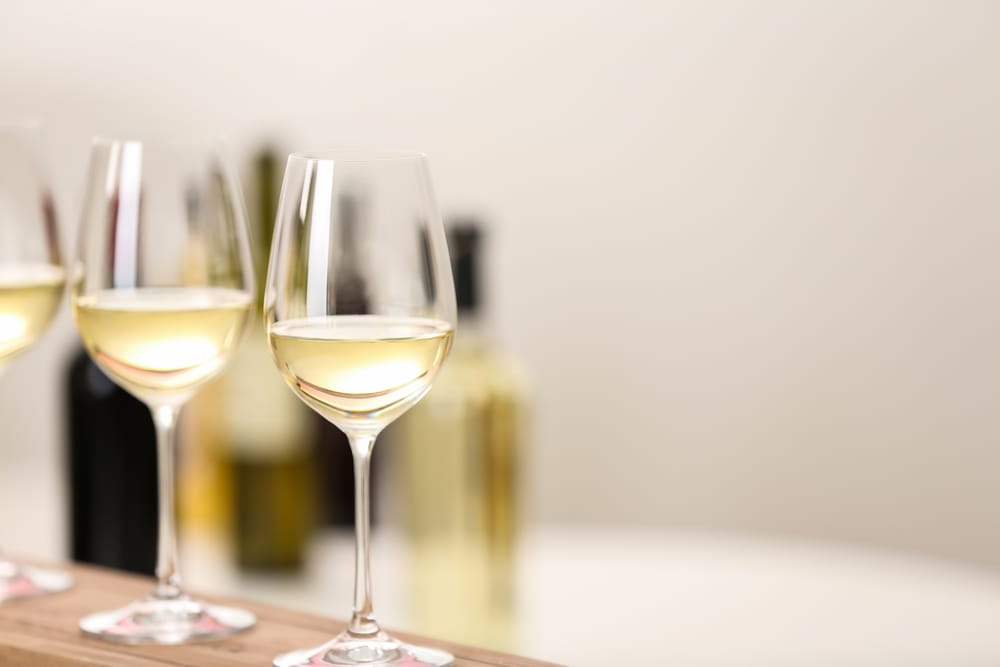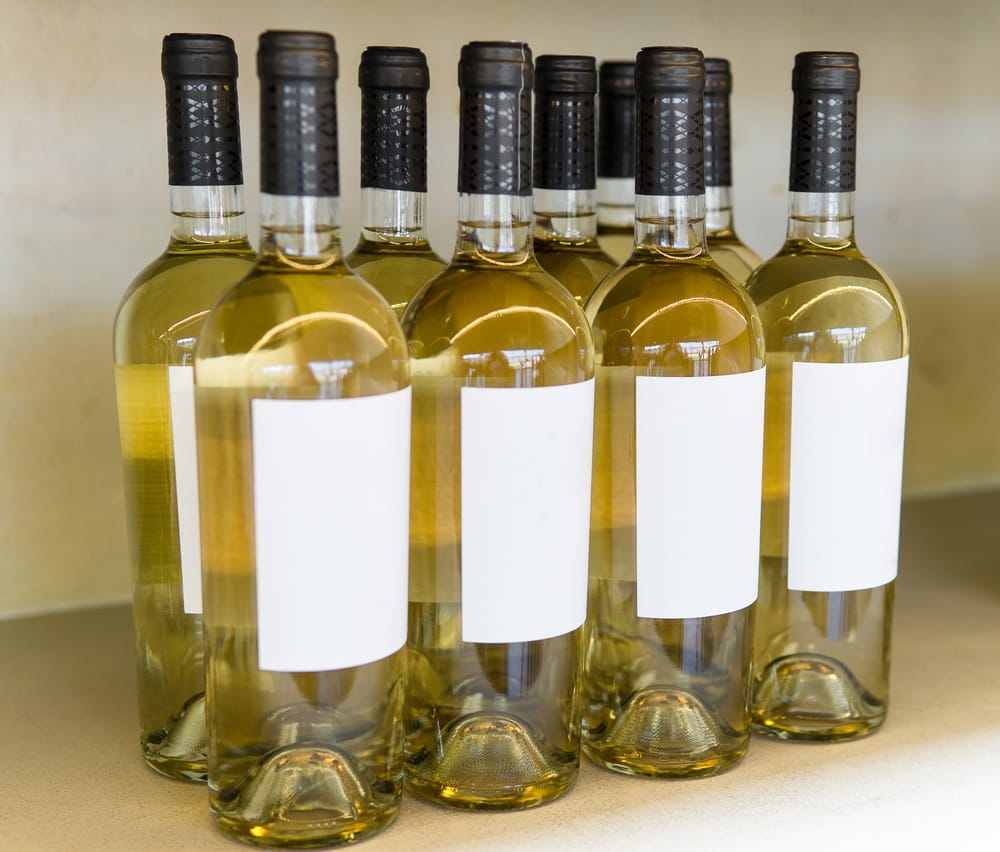White wine has so much to offer.
However, many people claim to not like white wine – and more often than not, this is due to it being incorrectly stored!
White wine is often forgotten in favor of its red counterpart and is simply shoved on a shelf in the pantry or on a windowsill in the kitchen.
What many people do not know is that storing it this way is what gives white wine the “acidic” taste that so many people complain about.
To help you store your white wine correctly and ensure that you are enjoying all that it has to offer, we have put together this guide to show you exactly what to do. In this article, we’ll cover:
- Why storing your white wine correctly matters
- The ideal storage temperatures of white wine
- How to store white wine at home, both long and short-term.
Let’s get started!
The Science of Wine Storage

Considering that wine-making is an exact science, it is no wonder that there is also a significant amount of science behind wine storage.
If stored incorrectly, wine can spoil – which not only is a waste of money but also prevents the drinker from enjoying the wine altogether!
Humidity is a major factor in the correct storage of white wine. If humidity levels are too low, the cork can dry out and cause the wine to oxidize.
This can give the wine an acidic taste that renders it undrinkable. Furthermore, if the cork completely dries out, it can slip out of the bottle and cause the wine to spill.
However, if the humidity is too high, the cork may dampen – which in turn allows oxygen into the wine and can also cause it to spoil!
Additionally, light exposure when being stored can also affect white wine.
Considerable UV exposure has been shown to give the wine an “off flavor” commonly known as “sun bleaching.” White wine is particularly at risk of this, as its bottles are usually lighter which lets in more light.
The Role of Temperature in Wine Preservation
Perhaps the most important factor in correctly storing and preserving your wine is the temperature it is stored!
This can have a significant effect on the taste of the wine and make or break the overall flavor profile.
If stored at a temperature that is too low the natural aromas and taste notes of the white wine can be subdued, as the cooler temperature causes the chemical reactions within the wine that give it flavor to slow down.
However, if the temperature is too high, the wine can oxidize and develop an unpleasant flavor that can be described as acidic or bitter. Some call this “cooking the wine” as the use of heat changes the flavor profile.
Ideal Storage Temperatures for White Wine
The ideal storage temperature for white wine is anywhere between 7°C (45°F) and 12°C (55°F).
This allows the wine to stay balanced and develop naturally without spoiling any of the flavor components.
Variations Among Different White Wines
The exact optimal temperature of white wine storage can vary based on the type of wine at hand!
For example, light-bodied white wines such as Sauvignon Blanc and Pinot Grigio are best stored at 45°-46°F, and 45-50 respectively.
On the other hand, full-bodied white wines such as Chardonnay benefit from a 50°F storage temperature, and sparkling white wines such as Prosecco are best stored anywhere from 50°-55°F.
Storing White Wine at Home

Storing your white wine at home doesn’t need to be complicated, and you have many options to ensure your bottles don’t spoil.
Wine refrigerators and coolers are your best option, as these are specifically designed to keep your wine at its optimum.
However, there are other solutions that you can implement if you do not want to spend money on a cooler or refrigerator.
Guide on choosing the right wine refrigerator or cooler for home storage
There are several factors to look out for when choosing a wine refrigerator or cooler for a home storage solution.
The most important is finding a product with precise temperature control or temperature zones so that you can tailor the wine’s environment to its needs. This also prevents any unnecessary temperature fluctuations from occurring.
You should also keep the bottle capacity of the refrigerator or cooler in mind.
If you are someone who buys or receives a lot of wine and wants to have it stored correctly for easy access, make sure you buy a refrigerator with a large bottle capacity!
If you are a casual drinker who only owns a couple of bottles at any one time, a small wine cooler will suffice.
Finally, make sure you select a product with good humidity and light control. These are two of the most important factors that can have an impact on a wine’s flavor, and by controlling these elements you will ensure your wine stays at its optimum.
DIY Storage Solutions
If you do not want to buy a wine refrigerator or cooler, there are some DIY options for you to implement instead.
While these are not as effective as a purpose-built refrigerator, they are still good ways to preserve the flavor of your wine.
The best option is to find a place in your house that is consistently cool and dark. This could be a basement, a temperature-controlled area of your fridge, or a certain cupboard or cabinet.
From there, you can DIY a wine rack that allows bottles to be stored horizontally.
Alternatively, if you do not have a light-protected space in your kitchen, you can DIY light and temperature control by using a blanket or cloth to cover your bottles.
This will help to protect the wine and prevent it from being destroyed by light or heat exposure.
Long-Term vs. Short-Term Storage
Whether you intend to store your wine long-term or short-term may change the way you store it.
A wine that you wish to store in a long-term capacity (meaning anything longer than 6 months) needs to have much stricter conditions than that of wine intended to be opened quickly.
This means you need to ensure there is absolutely no light or vibration affecting the wine bottle, and that it is stored at the exact correct temperature!
Long-term wine storage is often best done in a cellar if you have access to one.
You can be slightly more relaxed about these elements if you intend to consume the wine soon, as there is less time for the wine to be spoiled by external factors.
However, even bottles that are intended to be consumed within a short period of time should still be carefully stored. Make sure they are placed in a cool dark area to ensure maximum flavor.
Impact of Temperature Fluctuations

White wine can be significantly impacted if it is exposed to temperature fluctuations.
By heating and then cooling the wine, chemical reactions can occur within the wine that can cause the delicate flavors to be unbalanced. This can lead to an acidic or “off” taste that ruins the wine.
Additionally, changing temperatures can cause the cork to expand and contract, which lets in and then traps oxygen which can also spoil the flavor of the wine and leave you with an undrinkable bottle.
Final Words
How you store your white wine can change whether you have a fantastic bottle or an undrinkable one!
Many elements such as humidity, light, and temperature can impact how your wine tastes. Overexposure to any of these can cause the wine to spoil and leave you without a bottle to enjoy.
The best way to ensure your wine is correctly stored is by using a purpose-built wine refrigerator. However, you can take other less costly steps, such as ensuring your wine is stored in a dark place and is away from extreme heat.
Ensuring you store your white wine correctly will ensure that you get maximum enjoyment out of every bottle and allow you to experience all the complex and delicate flavors that this variation of wine has to offer.
- White Wine Storage Temperature: Key to Perfect Preservation - December 19, 2023
- Syrah vs Zinfandel: Difference Between Two Red Titans - November 24, 2023
- Riesling and Moscato Face-Off: Comparing Sweet Wines - November 22, 2023










